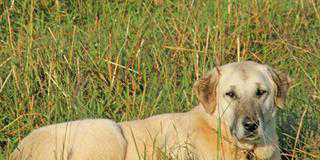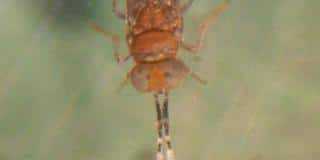A common nuisance to man and beast, flies can reduce the profitability of dairy farmers by lowering production and boosting vet expenses. Controlling the insect, however, requires a multi-pronged approach, involving changing farm management, encouraging predators and using chemical solutions.
Two fly species are an especial nuisance in the dairy: the house fly (Musca domestica) and the biting stable fly (Stomoxys calcitrans). Both can be harmful to cows in a number of ways, according to Dr Paul Burden, a professional services veterinarian at pharmaceutical maker Novartis. Flies have been proven, through research studies, to transmit various livestock diseases, including Rift Valley fever, Blue-tongue, diarrhoea, mastitis, and three-day sickness.
In addition to these threats, their physical presence irritates cows and increases stress, and this curbs milk production, Burden says. “When cows stress, they don’t eat. When they don’t eat, they don’t produce milk,” he explains. “The stress caused by flies can lead to as much as a 25% drop in milk production on farms that don’t control the insects.”
The first line of defence against flies is to change farm management.
CULTURAL CONTROL
This method involves making changes in the surroundings to discourage flies from developing. The life stages of a fly comprise the laying of eggs, hatching into maggots, hibernating in pupae and metamorphosing into the fly. About 80% of a normal house fly’s life – the first three stages – is invisible to the farmer, Burden says.
“We spend most of our time on only 20% of the fly problem,” he says. To rectify this, farmers and their staff should monitor fly populations regularly. Physical methods can be used to kill adult flies. Fly gauzes and pheromone traps can be fitted in openings of structures to keep the fly population down.
Secondly, as flies need damp matter to lay their eggs, farmers should ensure there are no leaking taps or pipes. Food spills and cow manure should also be cleaned up speedily, and farmers should ensure good ventilation in dairy houses to limit humidity.
BIOLOGICAL METHODS
The use of biological ways to limit fly populations should be the farmer’s second line of defence.When manure is removed, a small amount should be left to lure insects such as beetles, mites, parasitic mites and even birds, Burden says.
Beetles are particularly important biological control agents as they break up egg-containing dung, which helps to eliminate flies at the first life stage. Farmers can also use selective chemicals, such as diptera-specific larvicides and Musca-specific baits, to ensure that biological control agents are not harmed.
CHEMICAL METHODS
Burden warns that dairy farmers often rely too readily on chemicals to contain fly populations. The use of chemicals should “be compatible with the cultural and biological methods” that farmers use as the first lines of defence. Farmers should take great care when using chemicals, and pay attention to the effects and application methods of these, so that they do not harm beneficial insects.
When resorting to chemicals, they should apply resistance management, rotating chemicals to prevent flies from developing resistance to the ingredients. In addition, a farmer should consider chemicals that target the fly’s initial stages.
INTEGRATED CONTROL
“Flies have been around for 225 million years,” Burden says. “They survived the dinosaurs and they’ve survived all control measures. They are likely to survive mankind.” There is no single method that can be used to eliminate flies in a dairy. The only way to keep their numbers under control is to use a combination of prevention, biological and chemical methods.













